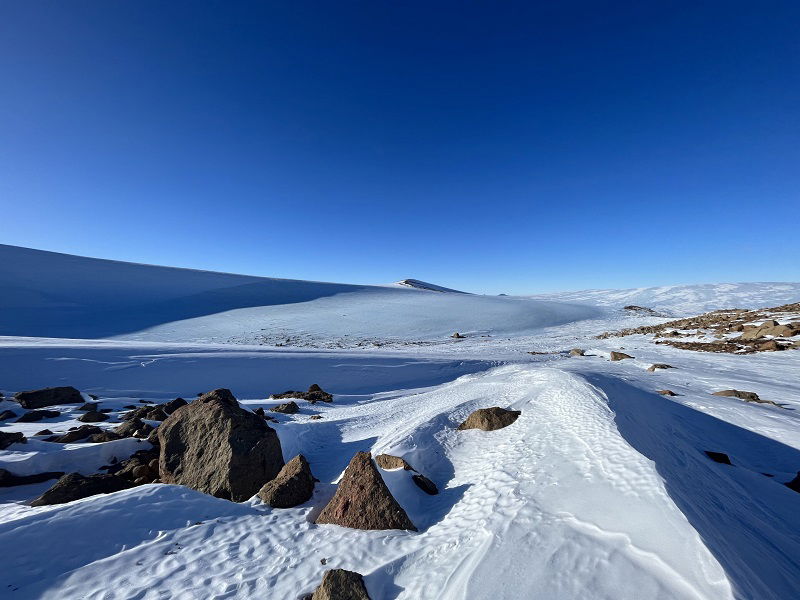Scientists have discovered the oldest directly dated ice on Earth—an incredible six million years old—deep in the frozen expanse of East Antarctica. The ice, along with ancient air bubbles trapped inside, offers a rare and powerful glimpse into what our planet’s climate was like when global temperatures and sea levels were far higher than they are today.
The discovery was made in the Allan Hills region by a U.S. research team from the Center for Oldest Ice Exploration (COLDEX), a collaboration of 15 institutions led by Oregon State University. The findings were published in the journal *Proceedings of the National Academy of Sciences*.
“Ice cores are like time machines,” says Sarah Shackleton of the Woods Hole Oceanographic Institution, one of the study’s lead scientists. “They let us see how Earth’s atmosphere and climate changed over time. The Allan Hills cores take us back much further than we ever imagined possible.”
Until now, the oldest ice directly dated by scientists was around 2.7 million years old. The new six-million-year-old sample more than doubles that record, opening a new window into an era when Antarctica’s climate was significantly warmer and large parts of its ice sheet may have melted, raising global sea levels.
John Higgins of Princeton University, another lead author, explains that the team used a noble gas isotope of argon trapped within the ancient air bubbles to directly date the ice. “This method allows us to measure the age of the ice itself, rather than relying on the age of nearby rocks or sediments,” he says. “What we have is a library of climate snapshots that are six times older than any previous ice core data.”
The COLDEX team found the ancient ice in a very different setting from traditional deep ice core sites. Instead of drilling more than two kilometers below the surface, they targeted the edges of the ice sheet in the Allan Hills, where wind, cold, and rugged terrain preserve ancient ice closer to the surface.
The team spent months in remote field camps drilling through one to two hundred meters of ice under extreme conditions. “We’re still figuring out how ice that old has survived so close to the surface,” Shackleton explains. “It’s probably a combination of strong winds that sweep away snow and the intense cold that keeps the ice nearly motionless. The Allan Hills are one of the best—and toughest—places on Earth to find shallow, ancient ice.”
Temperature readings taken from oxygen isotopes in the cores show that Antarctica has cooled by about 12 degrees Celsius (roughly 22 degrees Fahrenheit) over the past six million years. This marks the first direct measurement of how much the continent’s climate has changed since that time.
The researchers are now analyzing the ice for traces of greenhouse gases and ocean changes to better understand how natural climate shifts occurred before humans began influencing the planet’s atmosphere.
“This ancient ice will help us understand how Earth’s climate system responds to warmth and high carbon dioxide levels—conditions that may echo our own future,” says COLDEX Director Ed Brook of Oregon State University.
The team plans to return to the Allan Hills soon to continue drilling. “Given the spectacularly old ice we’ve already found,” Brook says, “we believe there’s an even deeper record waiting below—one that could stretch our knowledge of Earth’s climate history even further back in time.”
https://knowridge.com/2025/11/six-million-year-old-antarctic-ice-reveals-secrets-of-a-warmer-ancient-earth/

Be First to Comment